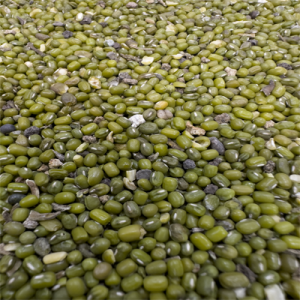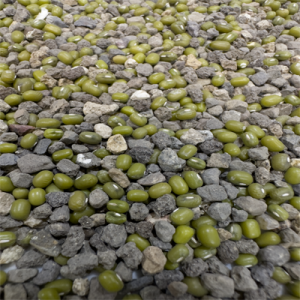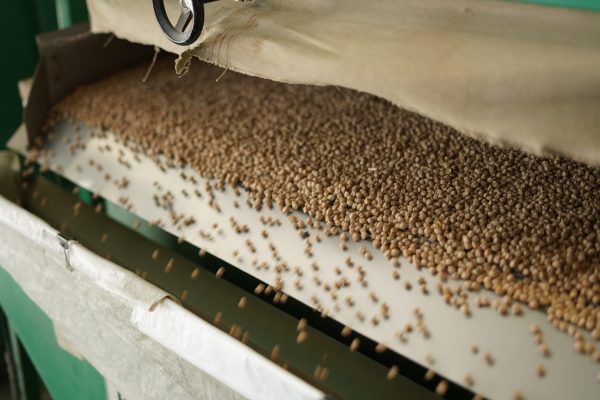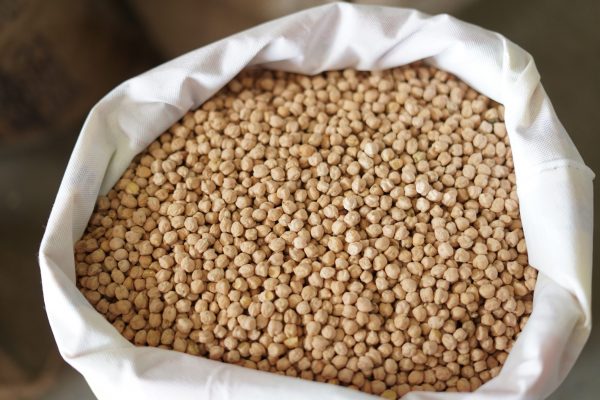Cleaning & Grading
About Cleaning & Grading
In this Centre there are two sets of Cleaning & Grading Machineries. One set consists of four machines viz. Pre Cleaner, Fine Cleaner, Destoner & Gravity Separator and another set with 2 machines Pre Cleaner and Fine Cleaner.Agri products like Paddy, Rice, Millets, feeds.Gingelly, Coriander seeds, Wheat, Sesame seeds, Mustard, Bengal gram, Red gram,Black gram, Green peas, Cow peas, Maizeand Groundnut kernels etc., etc., are being cleaned, de-stoned and graded in this facility.
The processing capacity per hour is 4 M.T. The processors, by cleaning & grading of raw materials, are able to manufacture quality finished goods with increased productivity and reduced manufacturing loss. The dhall recovery by our stakeholders has increased by about 3% because of our high technology graded machine. By adopting our eco-friendly technology even the waste material can be converted into a saleable material, especially as feeds
Advantage of Our Cleaning & Grading
Grain cleaning and grading machines are designed to remove impurities from grains that are not beneficial to the final product. By removing dirt, dust, and other foreign materials, these machines improve the quality and safety of the final product, ensuring that it meets the required standards. Additionally, sorting grains according to their size and quality results in a more consistent product, which is more attractive to buyers.
Clean and well-graded grains are more marketable as they are more visually appealing and meet the standards set by the industry. This increases their demand, leading to a better price for the farmer. By investing in grain cleaning and grading machines, farmers can ensure their product stands out in the market and attracts a larger pool of buyers.
Grain cleaning and grading machines are capable of removing impurities that can spoil grains, reducing the amount of waste generated. This not only saves storage space but also reduces the financial losses incurred as a result of spoilage.
We are using Fowler Westrup Denmark Technology Machines

We are using Fowler Westrup processing machinery for Post-harvest agro processing machines in collaboration with WESTRUP A/S, Denmark and OLIVER MANUFACTURING COMPANY INC. USA. Versatile and proven around the world, Fowler Westrup process machinery is backed by a nationwide sales and service network.
Fowler Westrup process machinery is ideally suited for the processing, handling, sorting & storage of seeds, spices, grains, tea, coffee, pulses, all varieties of Rice, edible oil & paddy.
Following are the things under post harvesting process done here
- Pre Cleaning
- Course Cleaning
- Fine Cleaning
- Size Grading
- Destoning
- Gravity Seperation
AFTC’s Cleaning and Grading Process
Process 1: Pre/Course Cleaning
- When grains comes into the mill from farmers, it contains lots of foreign materials, such as weed seeds, soil, rubbish, and other non-grain materials.
- Pre-cleaning helps remove these materials to improve the efficiency of huller and milling recovery. No removal of these can result in damage to the machinery by blocking the bin outlets.
- The grains are passed via a sieve drum and are rotated in a sieve cylinder. The brush attached in the sieve cylinder keeps cleaning it. The product flows over the magnet installed in it which functions as a speed breaker to remove dust and impurities.
- The grain is separated according to their sizes with the help of separators. The aspiration channel emits the soil with the help of the connection pipe. The pre-cleaner consists of circular, drum pre-cleaner and clobber.

- Fine cleaning is the process of separating the fine impurities from Pre cleaning process .
- Grain cleaners are the first and most important piece of equipment used to clean any type of grain, seed or beans. When analysing all of the elements that can have an impact on grain quality, it makes good business sense for a grain producer to seriously consider procuring their own grain cleaner.
- It is estimated that the cost of a grain cleaner can generally be recouped over two to three seasons, making it a viable purchase, even for smaller grain producers.
.png)
- Size grading is predominantly followed in almost all types of fruits based on size. The fruits are graded as small, medium, large, and extra-large. Based on maturity, the fruits are graded as immature, properly mature, and over mature. Grading based on maturity decides both quality and shelf life.
- Each determination of heat-damaged kernels, damaged kernels, foreign material, wheat of other classes, contrasting classes, and subclasses is made on the basis of the grain when free from dockage and shrunken and broken kernels.
- Defects are damaged kernels, foreign materials, and shrunken and broken kernels. The sum of these three factors may not exceed the limit for the factor defects for each numerical grade.
- Foreign material is all matter other than wheat that remains in the sample after the removal of dockage and shrunken and broken kernels.

- Destoning. On the first layer of the machine driven by vibration motors, a pre-separation takes place. Light and heavy particles are separated according to specific weight via currents of air and oscillating movements. On the second sieve layer, the separation of grain and heavy particles takes place.
- Destoners are used for separating granular material into two fractions according to specific weight. They are primarely used for the elimination of heavy impurities, such as stones, metallic particles etc., from coffee, grain, pulses etc.




